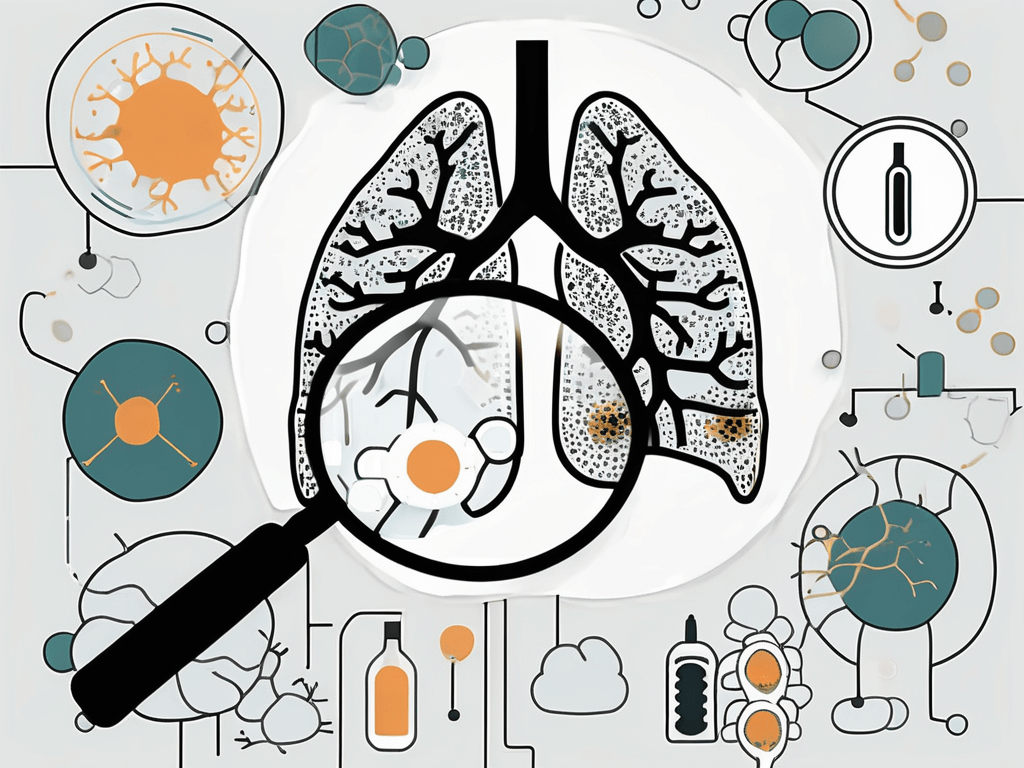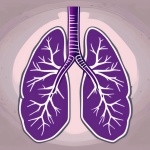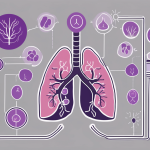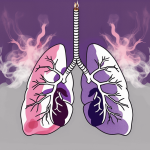Small cell lung cancer (SCLC) is a highly aggressive form of lung cancer characterized by rapid growth and early metastasis. This article provides comprehensive information on SCLC, covering its definition, causes, symptoms, diagnostic procedures, and treatment options. Early detection is crucial for successful treatment outcomes, and individuals are encouraged to be aware of common symptoms and risk factors associated with SCLC. Treatment options may include surgery, radiation therapy, chemotherapy, targeted therapy, and immunotherapy, depending on the stage and characteristics of the cancer. It is emphasized that understanding SCLC enables individuals to make informed decisions about their health and treatment plans, ultimately improving their chances of survival.
Small cell lung cancer (SCLC) is a type of cancer that affects the lungs. It is important to have a thorough understanding of this disease, including its causes, symptoms, and treatment options. By familiarizing ourselves with this information, we can empower ourselves to make informed decisions and take control of our health.
What is Small Cell Lung Cancer?
Small cell lung cancer, also known as oat cell carcinoma, is a type of lung cancer that starts in the cells of the lungs. These cells divide and grow uncontrollably, forming tumors in the lungs. Unlike non-small cell lung cancer, which tends to grow slowly, small cell lung cancer is more aggressive, spreading quickly to other parts of the body.
Definition and Overview
Small cell lung cancer is characterized by the presence of small, oval-shaped cells that look like oats under a microscope. These cancer cells can quickly divide and spread to nearby tissues and lymph nodes. In advanced stages, small cell lung cancer can metastasize to distant organs, such as the liver or bones. It is crucial to detect and treat this cancer early to improve outcomes and increase the chances of survival.
The Importance of Early Detection
Early detection is vital when it comes to small cell lung cancer. Detecting cancer at an early stage increases the likelihood of successful treatment. Therefore, it is essential to be aware of the common symptoms and seek medical attention promptly if any of these symptoms arise.
One of the most common symptoms of small cell lung cancer is a persistent cough that does not go away. This cough may be accompanied by blood in the sputum or chest pain. Other symptoms may include shortness of breath, wheezing, hoarseness, and unexplained weight loss.
It is important to note that these symptoms can also be caused by other conditions, such as respiratory infections or chronic obstructive pulmonary disease (COPD). However, if these symptoms persist or worsen, it is crucial to consult a healthcare professional for further evaluation.
In addition to recognizing the symptoms, certain risk factors increase the likelihood of developing small cell lung cancer. Smoking is the leading cause of this type of cancer, with approximately 98% of cases being attributed to tobacco smoke. Exposure to secondhand smoke, radon gas, asbestos, and other carcinogens can also increase the risk.
Individuals with a family history of lung cancer or a personal history of other lung diseases, such as chronic bronchitis or emphysema, may also have an increased risk. Furthermore, certain genetic mutations, such as alterations in the TP53 gene, have been associated with an increased susceptibility to small cell lung cancer.
Early detection methods for small cell lung cancer include imaging tests, such as chest X-rays and computed tomography (CT) scans, which can detect abnormalities in the lungs. Additionally, a biopsy may be performed to confirm the presence of cancer cells.
Treatment options for small cell lung cancer depend on the stage of the disease and may include surgery, radiation therapy, chemotherapy, targeted therapy, and immunotherapy. In early-stage cases, surgery may be performed to remove the tumor and nearby lymph nodes. In advanced cases, a combination of chemotherapy and radiation therapy is often used to shrink the tumor and alleviate symptoms.
Research is ongoing to develop new and more effective treatments for small cell lung cancer. Clinical trials are conducted to evaluate the safety and efficacy of novel therapies, such as immune checkpoint inhibitors and targeted therapies that specifically target cancer cells while sparing healthy cells.
In conclusion, small cell lung cancer is a highly aggressive form of lung cancer that requires early detection and prompt treatment. Recognizing the symptoms, understanding the risk factors, and seeking medical attention are crucial steps in improving outcomes and increasing the chances of survival. Ongoing research and clinical trials offer hope for the development of new and improved treatment options for this challenging disease.
The Causes of Small Cell Lung Cancer
While the exact causes of small cell lung cancer are not fully understood, there are several factors that have been identified as potential contributors to its development.
Genetic Factors
Genetic factors play a role in small cell lung cancer. Some individuals may inherit genetic mutations that increase their risk of developing this type of cancer. If you have a family history of lung cancer or other types of cancer, it is important to discuss this with your healthcare provider so appropriate screening can be done.
Environmental Triggers
Exposure to certain environmental triggers can increase the risk of developing small cell lung cancer. These triggers include exposure to tobacco smoke, both from smoking and secondhand smoke. Other factors, such as exposure to asbestos, radon, or other carcinogens, may also contribute to the development of this disease. Minimizing exposure to these environmental triggers is essential in preventing small cell lung cancer.
Recognizing the Symptoms of Small Cell Lung Cancer
Being aware of the symptoms of small cell lung cancer is crucial for early detection and prompt medical intervention. By recognizing the warning signs, we can seek medical attention as soon as possible, increasing the chances of successful treatment.
Early Warning Signs
Some early warning signs of small cell lung cancer include persistent coughing, shortness of breath, chest pain, coughing up blood, and unexplained weight loss. If you experience any of these symptoms, it is important to consult with your healthcare provider for further evaluation.
Advanced Stage Symptoms
As small cell lung cancer progresses, additional symptoms may arise. These can include fatigue, loss of appetite, difficulty swallowing, hoarseness, and persistent infections. If you are experiencing any of these symptoms, it is crucial to seek medical attention promptly for an accurate diagnosis and appropriate treatment.
Diagnostic Procedures for Small Cell Lung Cancer
Diagnosing small cell lung cancer involves a series of tests and procedures to determine the presence of cancer and its stage. These diagnostic procedures enable healthcare professionals to develop an appropriate treatment plan based on the specific characteristics and stage of the cancer.
Imaging Tests
Imaging tests, such as X-rays, CT scans, and PET scans, are commonly used to visualize the lungs and surrounding tissues. These tests provide detailed images that help identify the presence of tumors and assess their size and location.
Biopsy and Pathology
A biopsy is often necessary to confirm the diagnosis of small cell lung cancer. During a biopsy, a small sample of tissue is taken from the tumor and examined under a microscope. This enables healthcare professionals to determine the specific type and characteristics of the cancer cells, aiding in the development of an individualized treatment plan.
Treatment Options for Small Cell Lung Cancer
Effective treatment for small cell lung cancer depends on several factors, including the stage of the cancer, the overall health of the patient, and their treatment preferences. It is essential to consult with healthcare professionals to determine the most suitable treatment options.
Surgery and its Effectiveness
Surgery is not often recommended for small cell lung cancer, as it typically spreads quickly to other parts of the body. However, in some cases, surgery may be considered for early-stage tumors or to alleviate symptoms caused by the cancer. Your healthcare team will evaluate the feasibility and effectiveness of surgery based on your specific circumstances.
Radiation Therapy
Radiation therapy utilizes high-energy rays to destroy cancer cells and shrink tumors. It is commonly used in the treatment of small cell lung cancer. Radiation therapy can be delivered externally or internally, depending on the size and location of the tumors. Your healthcare provider will determine the most appropriate radiation therapy approach for your individual case.
Chemotherapy
Chemotherapy is often a key component of small cell lung cancer treatment. It involves the use of drugs that target and kill cancer cells throughout the body. Chemotherapy can be administered orally or intravenously, either as a standalone treatment or in combination with other therapies. Your healthcare team will develop a personalized chemotherapy plan tailored to your specific needs.
Understanding small cell lung cancer is crucial to navigate diagnosis, treatment, and survivorship. By being informed about the causes, symptoms, and treatment options, you can actively participate in your healthcare decisions and ensure the best possible outcomes. Remember, early detection and proactive management are key in the fight against small cell lung cancer. Reach out to your healthcare provider if you have any concerns or questions.






